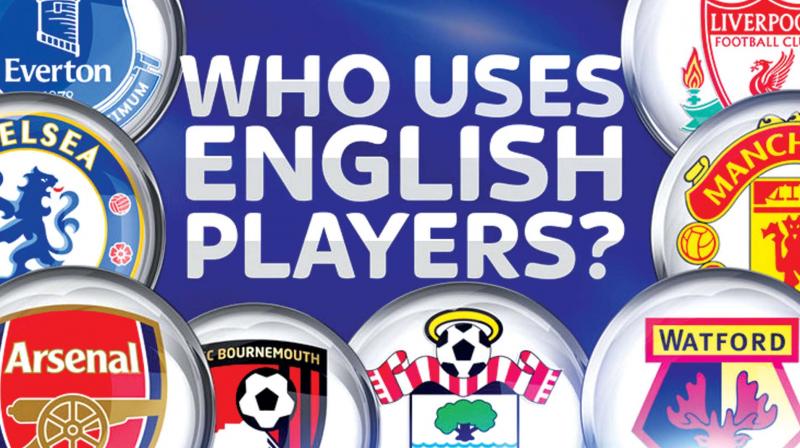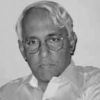How English is the English Premier League?

They call it the English Premier League (EPL), the most avidly followed football extravaganza played anywhere in the world. They can keep their La Liga, their Bundesliga and their Serie A, not to mention the Champions League and the UEFA Cup. Perhaps the all-consuming quadrennial World Cup, just kicked off in Russia, is the only other tournament garnering more eyeballs than the EPL. The world’s greatest footballers, the likes of Messi, Ronaldo and Neymar do not feature in the EPL. They play for glamour clubs like Barcelona and Real Madrid in the Spanish League. But ask sports lovers in India which international sport they are glued to every weekend on television, and pat will come the answer - the English Premier League. Provided no India international cricket intervenes.
In my callow youth in Calcutta during the ‘70s, the football season meant just two clubs for all the tea in China - Mohun Bagan and East Bengal. These two, with Mohammedan Sporting a distant third were the only clubs the crazy soccer fans of Calcutta followed. The clubs had an adoring fan base, but the standard of football was patchy. Like the pitches. There were legendary names like Chuni Goswami, P.K. Banerjee, Thangaraj and Shyam Thapa (the bicycle kick specialist) who were local heroes. Some foreign recruits like Chima Okerie, Majid Bhaskar and Jamshed Nassiri became household names. Once in a blue moon a Pele well past his prime, or a tragically obese Maradona would pay goodwill visits to Calcutta sending the Eden Gardens or the Salt Lake Stadium into paroxysms of rapture.
Cut to Y2K onwards with private television channels offering high definition programming courtesy Star Sports, ESPN, SONY, NEO and hey presto, Indian sports fans, in the comfort of their homes, could watch matches played in the EPL and the European Leagues. Now it’s all about Manchester United, Chelsea, Manchester City, Arsenal, Spurs and Liverpool. Every kid in India knows the high profile managers: Mourinho, Conte, Guardiola, Wenger, Pochettino, and Klopp. To say nothing of star strikers Aguerro, Kane, Lukaku, Hazard and Salah.
Things are, happily, changing. The heavily sponsored Indian Football League has given the game a pan Indian status, and interest is not merely confined to the traditional football-crazed oases of West Bengal, Goa and Kerala. Big money is pouring in through corporates, Bollywood, Indian cricket icons - they have all taken a proprietary interest in the league. Following the cricket jamboree IPL, the football league is gaining traction, with fading foreign players and coaches involved. In the long run one hopes this initiative will yield rich dividends for Indian soccer.
That said, I would proceed with caution in building up Indian football’s future with the new look Indian Football League. We have only to study the EPL. Has it done anything to improve England's own standing as a footballing nation? England have won the World Cup just once in 1966 on their home turf in Wembley against what was then West Germany, courtesy a controversial goal but let’s not be petty. England won, fair play to them. Since then, Old Blighty’s performances on the world stage have been underwhelming. This is ironic when you consider how passionately the English fan supports his club during the Premier League. I suspect a Manchester United or Liverpool fan is more devoted to his club than to his national team, not unlike the CSK whistle podu army (high on MSD, their thala). England have had their Beckhams, Rooneys and Gerrards, all great players who flattered to deceive, but the nostalgic fans sigh for the Stanley Mathewses, Bobby Charltons and Bobby Moores.
Typically, most EPL squads are packed with non-English players. Sanchez, Firmino, Sane, Silva, De Gea etcetera, along with those mentioned earlier. The Smiths, Joneses and Browns are rare as hen's teeth.
Further, if you examine the composition of the English team, the majority of the players is of foreign extraction. I suspect there are more mixed race players in England now than Caucasian.
England is now a multicultural nation. Apart from those of West Indian or African descent, the increase in the influx of Asian immigrants has seen a major change in England's complexion.
Quite literally. Who knows, in time to come the English football team could comprise players with names like Gupta, Ramaswamy, Hafeez and Mushfiqur.
The English cricket team was led by Chennai born Nasser Hussain, with the likes of Mark Ramprakash, Monty Panesar, Min Patel and Moeen Ali in its ranks. Enoch Powell should be turning in his grave!
Those who make a study of these things aver that the world is turning brown. Whites are cohabiting with blacks and browns, the results all too evident.
Even royalty has succumbed. We could be looking at a brown king or queen in the distant future should Prince William abdicate.
If at all he ascends, seeing as he has to see out his grandmother and father! If you walk around Central London, you are likely to run into more coloured people. Check into any hotel and you will be greeted by surly staff with a pronounced East European accent. If you really want to meet propah English stock in their natural habitat, you should visit the quaint English countryside for a rare sighting. If you are lucky, Mr. and Mrs. Arbuthnot, residing in Reading or a sylvan village in Somerset will treat you to buttered scones, strawberry jam and tea (‘I’ll put the kettle on, dear’), and you can discuss Churchill and Thatcher or Hobbs and Sutcliffe with them till the cows come home. They are awfully nice. And here’s the killer punch. A quintessentially English tea room, the highly acclaimed Juri’s, is tucked away in bucolic Winchcombe in the Cotswolds. It is run, very efficiently, by a Japanese family! I can vouch for it, having enjoyed their hospitality. Velly nice, jorry good! So I ask again. How English is
English football? Come to that, how English is England?
(The author is a brand consultant with an interest in music, cricket, humour and satire)

